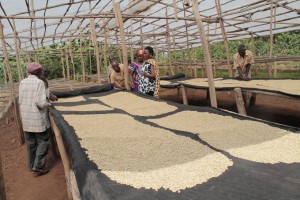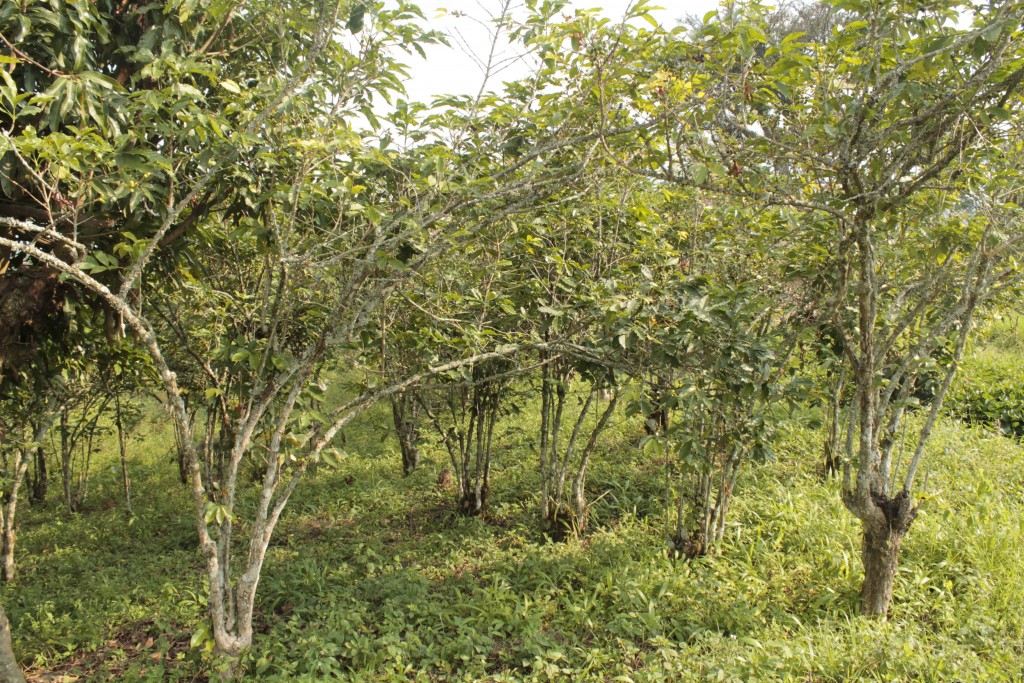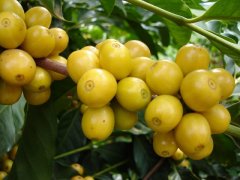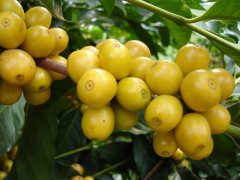Introduction to the flavor of sun-cured coffee beans in Saquarema Farm, South Minas, Brazil
For professional baristas, please follow the coffee workshop (Wechat official account cafe_style)

EU+NOP of sun-dried beans from Saquarema Farm in South Minas, Brazil
Coffee was first introduced to Brazil in the early 18th century. In 1727, the Brazilian government sent a personable army officer to secretly bring coffee seeds back to Brazil from French Gaiana under the pretext of mediating border disputes. It is said that the governor's wife of French Gayana was so fascinated by the officer that she secretly brought coffee tree seeds to him at a farewell dinner party. At present, 2 million hectares of land in Brazil is used to grow coffee, the largest is Arabica, and the beans will eventually be sent to large bakers in various countries, also known as Santos (in the name of the export port of Santos, not the producing area). Brazil has also proved to be able to produce gourmet coffee and small quantities of coffee, and the local boutique coffee can not only be provided by small-scale coffee farmers. The main coffee producing areas in Brazil are Sul de Minas South Minas, Matas de Minas Minas South East Mountain Forest, Cerrado Hirado, the north-central mausoleum of Chapadas de Minas Minas, Mogiana, Paran á Parana and Bahia Bachia. There are both traditional varieties and variants, such as Bourbon, Mondo Novo Mondonovo, Icatu Ikatu, Kaduai, Iapar, cultivatedCaitai.
Brazil is the largest coffee producer in the world, accounting for about 30% of coffee production, but because Brazil is located in tropical rain forest areas with relatively flat terrain and few high-altitude mountain forests, most coffee is grown in low-altitude non-volcanic soil areas. And there is not much shade for shading, resulting in the disadvantage that Brazilian beans grow quickly, but the density and soft flavor of coffee does not change much. Coupled with large-scale machine harvesting of coffee beans with a wide range of maturity differences in coffee harvesting at the same time, so that the quality of Brazilian beans is not particularly outstanding has always stayed in the category of commercial beans.
After 2000, due to the inducement of coffee competition, the quality of coffee beans produced in the high-altitude areas of the south was appreciated, mainly by the farms around the Minas platform, and the coffee quality was also the largest among Brazilian beans, such as Sirado in the west of Minas and Matas in the east, Bashiya in the north or small farms in the south, Minas almost became synonymous with Brazilian boutique coffee. In recent years, the coffee competition is so accurate that it is separated by treatment (water treatment, half water washing, half sun drying), and has developed a variety of flavor, taste and finish, which is completely different from the traditional Brazilian coffee. In particular, half-sun and solarization performed best, with an increase in the aroma of clean, low-acidity fruit, reducing the rich chocolate flavor in the city of Kasuela, South Minas Gerais. Saquarema this is an ancient farm with a history of more than 200 years. The farm picks coffee without machine, but fully ripe coffee beans are picked by hand. The dry aroma has citrus and fruit tea aromas, the wet aroma has black tea aromas, the taste shows elegant aromas of jasmine and herbal tea, and the finish has a mellow oolong tea flavor. It tastes very fresh and gentle, which is an amazing work rarely seen in Brazilian beans.

Property Characteristics: farm characteristics
Farmer Farm owner: Fazenda Saquarema
City City: Minas Gerais State Minas Gias
Country countries: Brazil
Altitude altitude: 1250 m
Farm Size farm area: 110000 coffee workers
Coffee Characteristics: coffee characteristics
Variety varieties: Catua í, Catuca í, Yellow Bourbon Kaduai Yellow bourbon
Processing System treatment: Pulped Natural solarization

Appearance appearance: 16-18 Screen (16-18 mesh)
Top Jury Descriptions comment: the baking degree (Cinnamon) measured by the cup at the beginning of 60 seconds of explosion.
Aroma aroma / flavor flavor: peanut, malt, mint, black tea, vervain, sugarcane, caramel, chocolate, cocoa, oil ester
Sour quality: citrus, blueberry, oxalic acid, red apple
The complexity of complex is similar to that of other: clear and clean aroma of black tea, gentle taste, high temperature aroma of oolong tea, and rare elegance of Yu Yun Baxi beans.
Overall style attribute: clear aroma of tea. Rarely clean. Amazing.
Cup test date: 2014.03.29
Dry aroma: 9
Wet aroma: 8
Clean: 9
Sweetness: 9
Acid quality: 8
Palate: 9
Flavor: 8
Yu Yun: 8
Balance: 9
Overall: 9
Cup test score: 86
Important Notice :
前街咖啡 FrontStreet Coffee has moved to new addredd:
FrontStreet Coffee Address: 315,Donghua East Road,GuangZhou
Tel:020 38364473
- Prev

Colombia Narino Na Linglong small Farmer's Farm Coffee Flavor description
For the exchange of professional baristas, please follow the coffee workshop (Wechat official account cafe_style) Colombia Narino Na Linglong Farm Coffee beans Colombia is currently the third largest coffee producer in the world, after Brazil and Vietnam, coffee was first grown in the 1830s, to the 20th century coffee accounted for the largest export crops, the unique terrain of the mountains coupled with a variety of micro atmosphere
- Next

Introduction and Evaluation of Organic Coffee in Guawu Community, EL GUABO, Peru
Professional baristas please follow the coffee workshop (Wechat official account cafe_style) Peru EL GUABO Guawu Community Organic Coffee Peru began exporting coffee in 1887 and is now the eighth largest producer and the world's largest exporter of organic coffee, with an annual volume of 2 million bags, accounting for 5 per cent of total exports. More than 1/3 of the country's coffee is grown in the northern Cajamarca region.
Related
- Detailed explanation of Jadeite planting Land in Panamanian Jadeite Manor introduction to the grading system of Jadeite competitive bidding, Red bid, Green bid and Rose Summer
- Story of Coffee planting in Brenka region of Costa Rica Stonehenge Manor anaerobic heavy honey treatment of flavor mouth
- What's on the barrel of Blue Mountain Coffee beans?
- Can American coffee also pull flowers? How to use hot American style to pull out a good-looking pattern?
- Can you make a cold extract with coffee beans? What is the right proportion for cold-extracted coffee formula?
- Indonesian PWN Gold Mandrine Coffee Origin Features Flavor How to Chong? Mandolin coffee is American.
- A brief introduction to the flavor characteristics of Brazilian yellow bourbon coffee beans
- What is the effect of different water quality on the flavor of cold-extracted coffee? What kind of water is best for brewing coffee?
- Why do you think of Rose Summer whenever you mention Panamanian coffee?
- Introduction to the characteristics of authentic blue mountain coffee bean producing areas? What is the CIB Coffee Authority in Jamaica?

